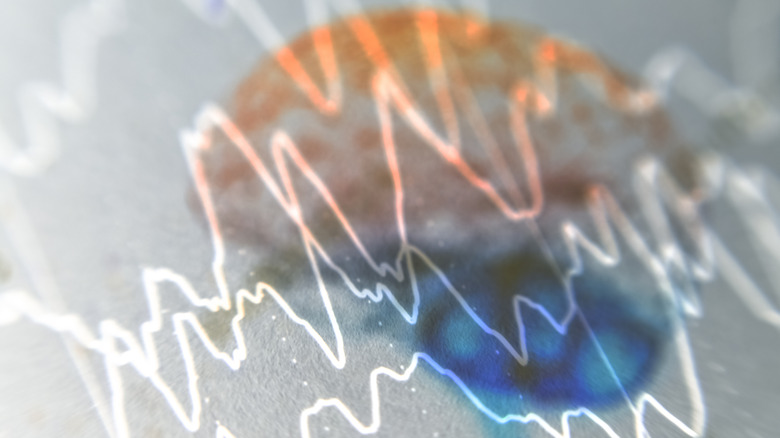Can You Communicate With A Severed Head?
In 1792, the guillotine was introduced in France as a way to decapitate criminals. Before that, capital punishment was done by way of a sword. However, a reform to the Criminal Code stated that punishments must be "humane" and criminals must not be left to suffer before their death. Dr. Joseph-Ignace Guillotin proposed the idea of using a simple mechanism — the guillotine — to carry out capital punishments. "With my machine, I'll have your head off in the blink of an eye, and you will not suffer at all," he stated to the members of the National Constituent Assembly, as reported by Cairn Info.
In 1536, Anne Boleyn was executed by way of a sword, and according to onlookers, they saw her mouth moving, as if attempting to speak when the executioner held her head for everyone to see (via Discover Magazine). On July 17, 1793, Charlotte Corday was sentenced to death for assassinating French revolutionary leader Jean-Paul Marat. After beheading Corday using the guillotine, the executioner grabbed her severed head and slapped her cheek. According to How Stuff Works, the crowd was surprised to see Corday's cheeks flushed with color and her face contorted to show indignation for being slapped. Clearly, Dr. Guillotin was wrong to assume that death was instant.
There is brief brain activity after decaptiation
According to Discover Magazine, a French physician named Dr. Gabriel Beaurieux wanted to confirm whether a person remains conscious after being decapitated. He attended an execution and placed himself close to where the severed head would drop. When the head dropped, he called out his name in an attempt to get a reaction. The physician claimed that the man's eyes briefly looked toward him, and then looked down. He tried a second time, and the same happened. On the third try, the man no longer reacted. The physician determined that the brain remains conscious for about 25 to 30 seconds after being severed from the body.
Throughout the years, there have been many studies regarding brain activity after death. One study experimented on mice, which were connected to an electroencephalography machine to measure their brain waves. After decapitation, there was brain activity close to four seconds Other studies showed the same result in varying lengths of time on different animals (via Live Science). In humans, the brain needs oxygen in order to function. When the head is severed, however, the oxygen supply also stops. The brain is then left with whatever oxygen remains in the system after decapitation, and this, per the Independent, provides a brief wave of activity in the brain after the heart has stopped beating.
Although the brain can remain conscious after being severed, talking is not possible, as the lungs and vocal cords are needed in order to do that. However, as Mental Floss notes, researchers speculate that "communication" might be possible, just like what happened with Dr. Beauriex's experiment, if only briefly.

